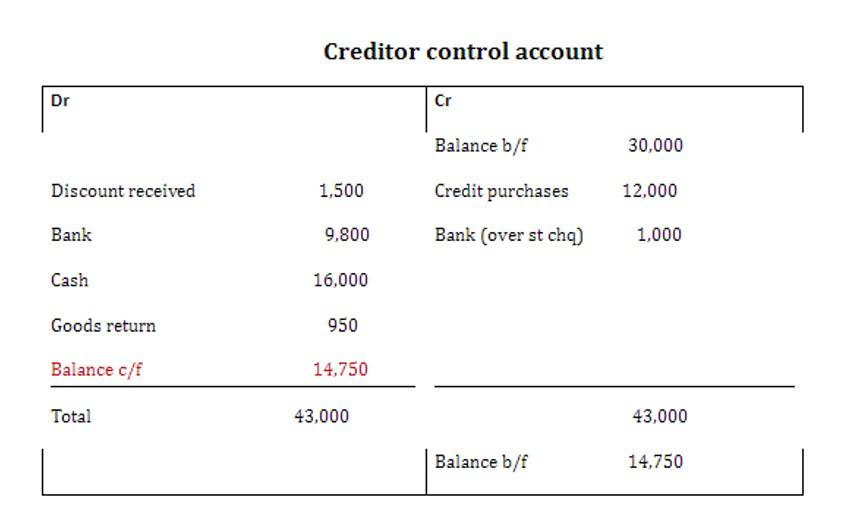
If a manufacturer leases its manufacturing plant and equipment, the lease is a product cost (as opposed to a period cost). That is, rent is included in the manufacturing overhead assigned to the goods produced. In addition to salaries and wages, other expenses related to administrative staff may include benefits such as health insurance, retirement plans, and paid time off.
- If liability is short-term and due within one accounting period and is not directly tied to the production of a product or inventory costs, then it could be considered a period cost.
- Another way to identify period costs is to establish what doesn’t qualify as such.
- By recognizing Period Costs in the income statement, stakeholders can assess the company’s ability to generate profits from its core activities and evaluate its operating efficiency over time.
- Period costs are expensed in the period incurred while product costs are treated as inventory and do not become costs of goods sold until the product is sold.
- When goods are sold, the cost is transferred from “Finished Goods Inventory” in the balance sheet to “Cost of Sales” (or Cost of Goods Sold) in the income statement.
“Period Costs” In Accounting Takeaways

As demand for specialized skills rises, businesses are broadening their hiring strategies, looking to Latin America as a solution to the talent gap. In addition to being qualified professionals with fluent English and located in a similar time zone, Latin what are period costs American talent is eager for salaries in stronger currencies compared to their local currencies. In the current economic context of the main talent sources, currency exchange rates against the dollar only reinforce this trend.
- These costs are not directly traceable to a specific product or service, but rather contribute to the overall functioning of the organization.
- Administrative costs may include expenditures for a company’s accounting department, human resources department, and the president’s office.
- Product costs (direct materials, direct labor and overhead) are not expensed until the item is sold when the product costs are recorded as cost of goods sold.
- By implementing robust performance evaluation and monitoring processes, businesses can identify cost-saving opportunities, optimize resource utilization, and drive sustainable growth and profitability.
- TranZact offers a valuable resource for Indian Manufacturing SMEs needing help with period costs.
- These expenses are incurred in the process of creating and improving products, services, or processes.
Resources

By carefully examining these period costs, businesses can assess how efficiently they are utilizing their resources and identify areas where costs can be reduced or eliminated. The immediate expensing of period costs has a direct impact on a company’s profit and loss statement. Since these costs are deducted from revenues within the same period they are incurred, they can significantly affect the net income reported. For example, a substantial increase in advertising expenditure in a particular quarter will decrease the net income for that quarter, Bookkeeping for Consultants even if the benefits of the advertising campaign are long-term. Costs that cannot be capitalized on a company’s balance sheet are referred to as period costs. In other words, they are expensed in the period in which they occur and are recorded on the income statement.

General and Administrative Costs
- Period costs may include both fixed and variable elements, such as rent (fixed) and sales commissions (variable).
- In the accounting records, the cost of finished products is accumulated in an inventory account – usually “Finished Goods Inventory”.
- They’re becoming aware of the cost and operational benefits of building remote teams, allowing them to stay competitive in a global market.
- Period costs are essentially charges that could be applied to the company’s income statement for the period in which such expenses were incurred.
- The key difference between product cost and period cost is that product concurs when a company produces any products.
- Period costs are expenses that are not directly tied to the production of goods or services.
- Understanding the different of period costs allows businesses to analyze their financial performance and make informed decisions.
By implementing best practices for managing period costs, businesses can optimize their expenses, improve their bottom line, and gain a competitive edge in the market. The costs are called period costs as they are included as expenses in the income statement in the period in which they are incurred. Period costs, also known as operating expenses, are expenses that are not directly tied to the production of goods or services. Instead, these costs are added over time and charged during a specific accounting period. Period costs are subtracted from the company’s revenue in the period in which they are charged rather than being recorded and allocated to the cost of goods sold (COGS) or inventory. They are the costs that are directly and indirectly related to contra asset account producing an item.
- For this reason, businesses expense period costs in the period in which they are incurred.
- In short, all costs that are not involved in the production of a product (product costs) are period costs.
- Investing in selling and marketing activities is crucial for businesses to reach their target market and drive sales.
- These costs are presented directly as deductions against revenues in the income statement.
- This necessitates a thorough analysis of both direct and indirect expenses to determine the minimum price at which a product can be sold without incurring a loss.
In the intricate world of accounting and management, period costs stand as a critical concept that influences financial reporting and strategic decision-making. These expenses are pivotal for businesses to comprehend as they directly affect profitability and operational efficiency. Weighted-average costing combines current-period expenses with prior-period costs in the beginning inventory. Managers are unable to determine the current period expense of manufacturing the product as a result of this combination. This issue is addressed by first-in, first-out (FIFO) costing, which assumes that the first units worked on are the first units moved out of a production department. Period Costs directly affect the company’s profitability by reducing net income on the income statement.

